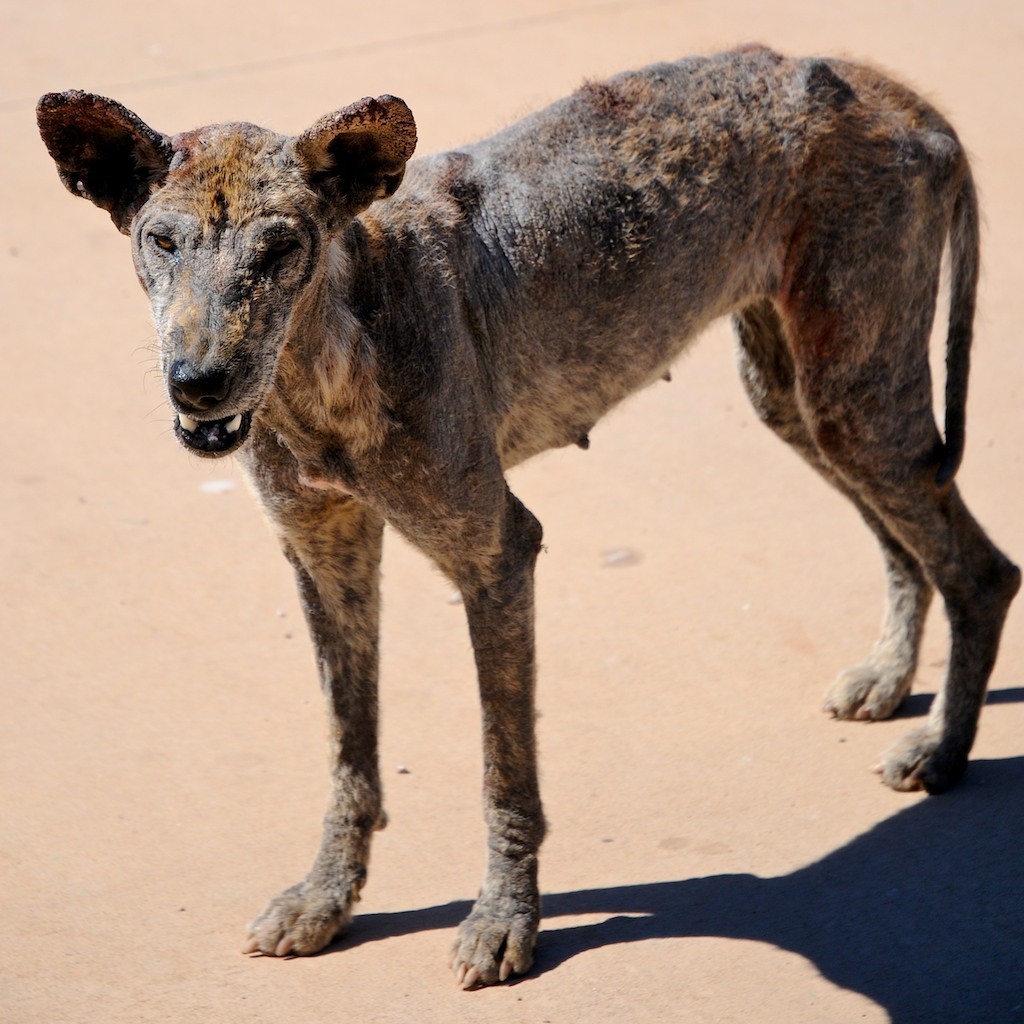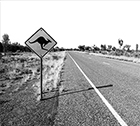Late last year I wrote here about the Inquest that NT Coroner Greg Cavanagh conducted into the deaths of Michael James Hardy and Robert James Roe (aka Robert James Roman) arising from attacks by dogs at the Hidden Valley town camp in Alice Springs.
The problem with feral dogs isn’t restricted to Alice Springs and central Australia.
In mid-November last year ABC Radio’s Sara Everingham reported on the death of a 22 year-old man at the central Arnhem Land community of Maningrida after being mauled by a pack of dogs.
And just two weeks ago the Alyssa Betts reported in the NT News that dog control officers of the Litchfield Shire Council on Darwin’s rural fringe reported at least 37 “dog incidents” in the two months of February and March this year.
Barely a week passes without some new reports of serious injury from some corner of the NT arising from an attack by uncontrolled dogs.
In late March Coroner Cavanagh handed down the 58 pages of his Findings of the Inquest.
They do not make for pleasant reading, and Cavanagh meticulously details the circumstances of the deaths of Michael Hardy and Robert Roe.
Michael Hardy died from “acute asphyxiation sustained during the course of being attacked by a pack of dogs”. The doctor that conducted the autopsy on Michael’s body hypothesised (there were no direct witnesses) that Michael fell backwards during the course of the attack, struck his head and was either concussed or rendered unconscious, with the dog or dogs causing severe wounds to his neck and throat that resulted in respiratory obstruction and subsequent death by suffocation.
Michael Hardy’s hands showed signs of defensive injuries where he had apparently tried to fight the dogs off. The NT Police officer that prepared the brief for the Coroner gave evidence that Michael Hardy’s body was surrounded by numerous dog tracks and that:
“There was not one part of [Hardy’s] body that was not bitten” and “…not an ounce of flesh from his knee to his hip on one leg…the deceased had lost part of his scrotum.”
Michael Hardy was just 27 years old when he died on the night of 24 July 2008. Cavanagh described him as a “loner” but he was nonetheless much loved by his family in Adelaide and had long been associated with, and fondly regarded by, that loose community of itinerants that drift between the riverbanks and town camps of Alice Springs. At the time of his death he had a blood alcohol level of 0.224%.
Robert Roe (aka Robert Roman) was 47 years old when he died. He grew up and and shared itinerant residence of the Todd River beds and banks and town camps with the same groups as Michael Hardy and “was known” to local police – mainly for minor offences and alcohol.
Early on the morning of 16 August 2008 he had been seen by residents of the Hidden Valley town camp lying naked and apparently extremely intoxicated or unconscious on the ground – at various times with several dogs sniffing around him. No action was taken to revive or attend to him until later that morning when his condition was noted, dogs were shooed away from his body and an ambulance called.
Notwithstanding the observations by Police that Robert Roe had suffered extensive injuries from the dogs, an autopsy revealed that he had died of a heart attack and that he had been attacked by dogs post mortem.
The Coroner goes on to detail a number of attacks at Alice Springs Town camps back to 1999 and then turns to his assessment of responsibility for the management and control of dogs at the town camps.
Coroner Cavanagh heard evidence from a number of witnesses from Tangentyere Council Incorporated (Tangentyere) and staff and a previous Mayor of the Alice Springs Town Council (the ASTC) about who bore responsibility for the control and management of the dogs that caused the deaths of Michael Hardy and Robert Roe.
After lengthy consideration of that evidence Coroner Cavanagh concludes, uncontroversially in light of the clear legislative responsibility that the ASTC has for animal management under the NT Local Government Act, that the ASTC:
“…accepts it had responsibility for animal control, and therefore dogs, on the town camps of Alice Springs, just as it does for the entire municipality of Alice Springs.”
More controversially, Coroner Cavanagh then goes on the find that ASTC was impeded in the execution of that responsibility by the actions of Tangentyere in relation to impeding the access of ASTC rangers and staff to the eighteen or so Town Camps that Tangentyere had, until very recently, responsibility for.
Coroner Cavanagh also found, in part due to the cultural complexities surrounding the town camps, that:
“…some lapses in the enforcement of dog control measures resulting in the proliferation of dogs in the camps. Responsibility for this must be borne by T[angentyerre].”
A little history is relevant here.
Tangentyere (originally formed as “Tunkatjira”) has assisted the residents of the then very basic (think second-hand sheets of tin and bough shelters) Town Camps “to gain land, shelter, services, transport, firewood and garbage collection” since 1974. Tangentyere is now the major service delivery agency for the eighteen Housing Associations that represent each of the town camps scattered around in Alice Springs.
The Tangentyere website advises:
“There are approximately 1,600 – 2,000 town camp residents, plus many visitors from remote communities. The overall population may increase to as much as 3,500 people during football tournaments and other special events.”
In 2000, after years of litigation and dispute, Tangentyere and the ASTC signed a Memorandum of Understanding that set a new framework for cooperation and partnership between the two Councils. One of the seventeen”areas of responsibility” to be considered by the Steering Committee established to manage the MoU was “Animal Management”.
The MoU was the subject of considerable evidence in Coroner Cavanagh’s Findings, with Clem Wheatley, Manager of the ASTC Ranger Unit from 2001 to 2005, giving evidence that the MoU:
“…wasn’t worth the paper it was written on. It was a dead cat…it meant nothing to us…it was more a hindrance that anything else.”
During his employment by ASTC Wheatley expressed his views about the issue of dogs frequently, forcefully and to anybody that would listen to him.
Most notably, Coroner Cavanagh noted that he expressed his serious concerns to his direct report at the ASTC, to the ASTC CEO, the Mayor and “…numerous other staff and Council members.”
There “…would not be a day go by” where Wheatley did not make some comment about the dog and related issues.
In November 2004 Wheatley sent an email to the members of the ASTC setting out his particular concerns about the risk of dogs attacking and or killing a human around the town camps, predicting that, without an “…immediate commitment by both ASTC and Tangentyerre that dog attacks will continue and unfortunately serious injury and/or death will be the result.”
Tangentyere’s Manager of Housing & Environmental Health & Community Services, David Donald, gave evidence of the value of two grants that Tangentyere had received that were used, in part, for dog management.
The first of these is $50,000 grant for wages for an Environmental Health Officer to provide services across all of the camps. The other grant was for the engagement of a veterinarian, initially at about $14,000 per annum and now currently worth about $50,000 per annum.
I’ll continue this piece in Part 2. If you have any comments about this matter please register – if you haven’t already – and leave us your thoughts.









Crikey is committed to hosting lively discussions. Help us keep the conversation useful, interesting and welcoming. We aim to publish comments quickly in the interest of promoting robust conversation, but we’re a small team and we deploy filters to protect against legal risk. Occasionally your comment may be held up while we review, but we’re working as fast as we can to keep the conversation rolling.
The Crikey comment section is members-only content. Please subscribe to leave a comment.
The Crikey comment section is members-only content. Please login to leave a comment.